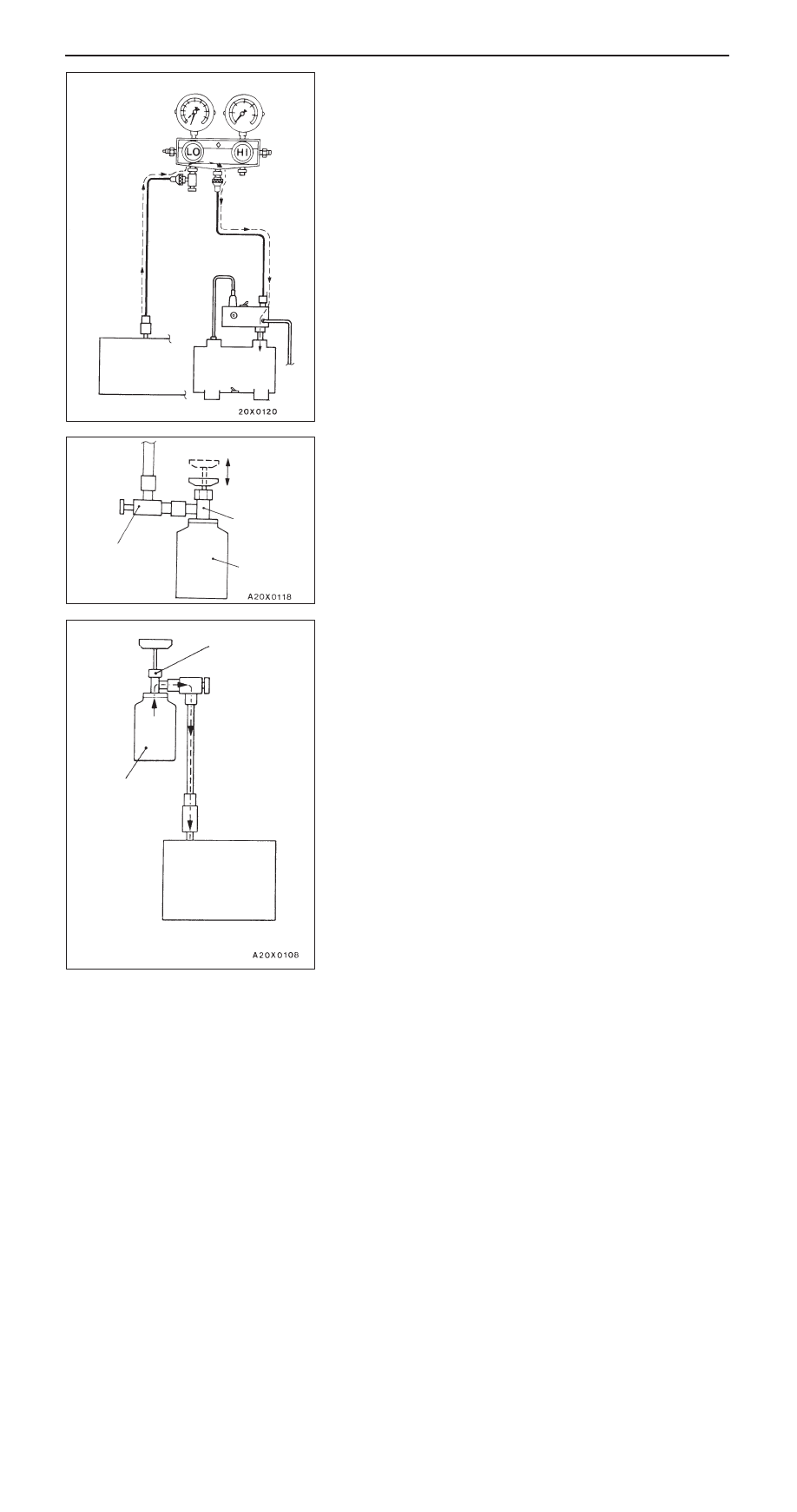Mitsubishi Pajero Pinin. Manual - part 365

HEATER, AIR CONDITIONER AND VENTILATION
–
On-vehicle Service
55-11
12. Turn the vacuum pump adaptor switch to the R-134a side
to start the vacuum pump.
Caution
Do not operate the compressor for evacuation.
13. Evacuate to a vacuum reading of 100 kPa or higher (takes
approx. 10 minutes).
14. Turn the vacuum pump adaptor switch OFF and allow
to stand it for 5 minutes.
Caution
Do not operate the compressor in the vacuum
condition; damage may occur.
15. Carry out a leak test. (Good if the negative pressure does
not drop.)
Caution
If the negative pressure drops, increase the tightness
of the connections, and then repeat the evacuation
procedure from step (12).
16. With the handle turned back all the way (valve open),
install the charging valve to the service can.
17. Turn the handle of the adaptor valve back all the way
(valve closed), remove it from the gauge manifold and
install the service can.
18. Tighten the handle of the charging valve (valve closed)
to puncture the service can.
19. Turn the handle of the charging valve back (valve open) and
tighten the handle of the adaptor valve (valve open) to
charge the system with refrigerant.
Caution
If the service can is inverted, liquid refrigerant may
be drawn into the compressor damaging it by liquid
compression. Keep the service can upright to ensure
that refrigerant is charged in gas state.
20. If the refrigerant is not drawn in, turn the handle of the
adaptor valve back all the way (valve closed).
21. Check for gas leaks using a leak detector.
If a gas leak is detected, re-tighten the connections, and
then repeat the charging procedure from evacuation in
step (12).
Caution
The leak detector for R-134a should be used.
22. Start the engine.
23. Operate the A/C and set to the lowest temperature (MAX.
COOL).
Low-pressure
service valve
Vacuum pump
Adaptor valve
Valve open
Valve close
Charging
valve
Service can
Charging valve
Service can
(Refrigerant
container)
Low-pressure
service valve